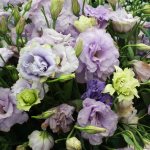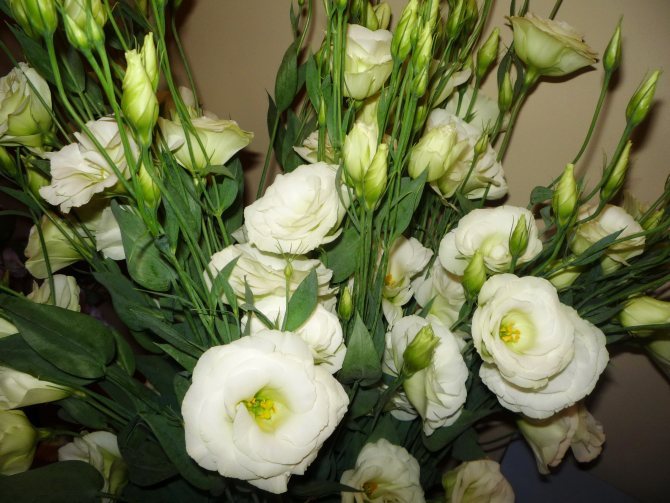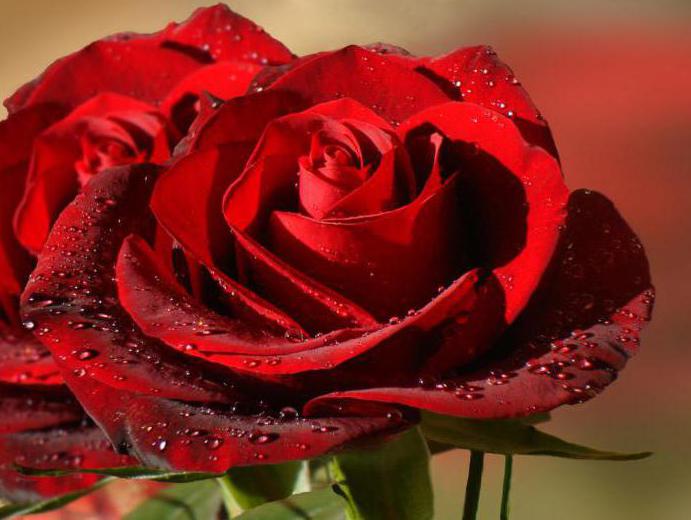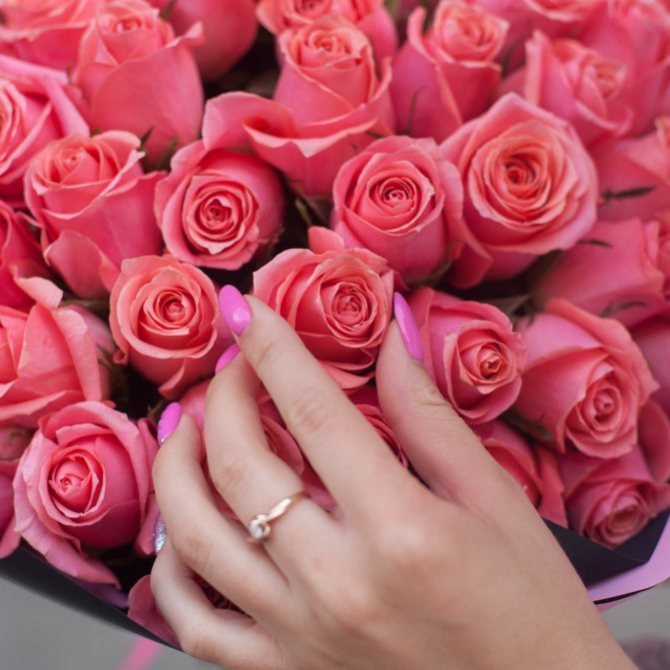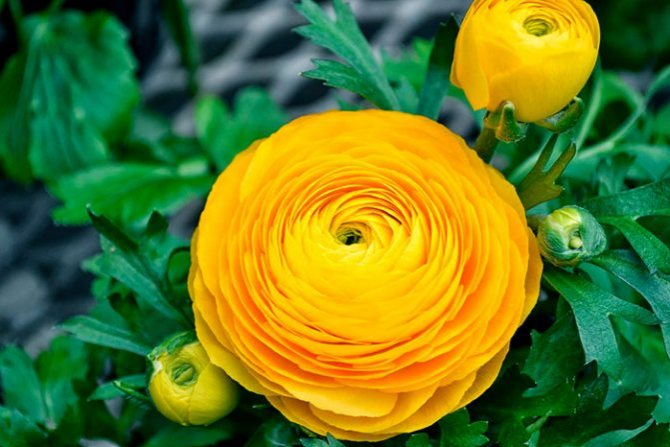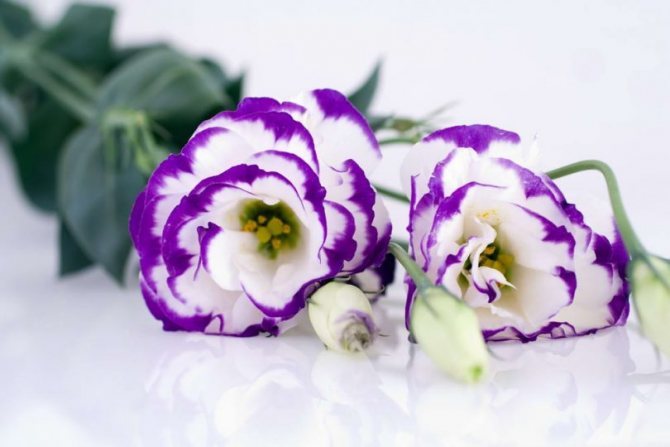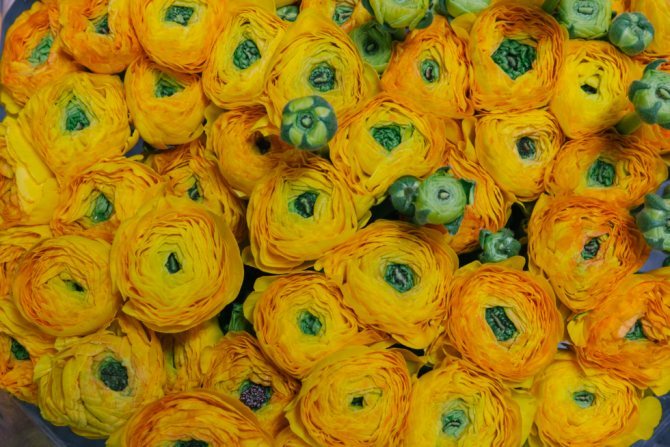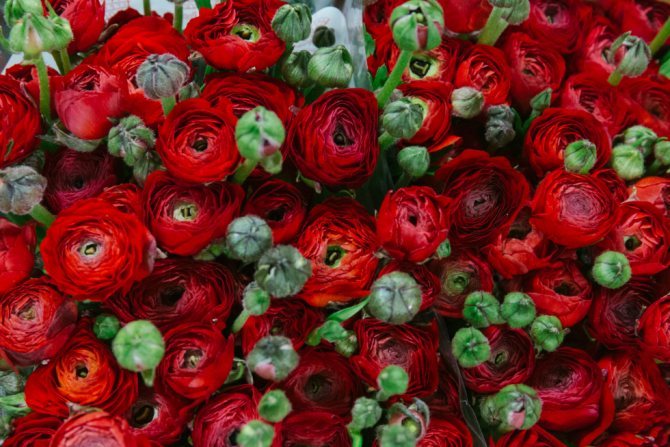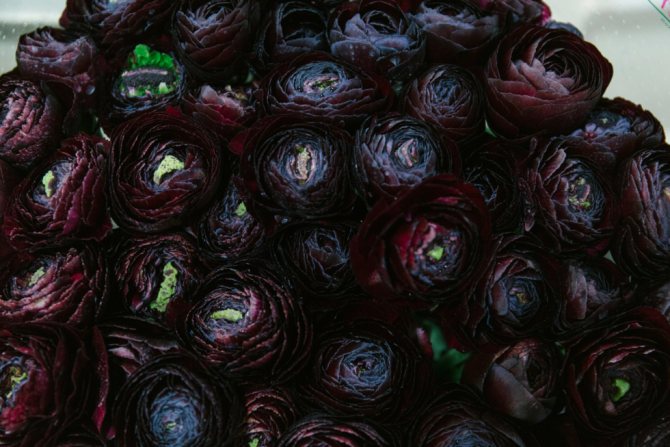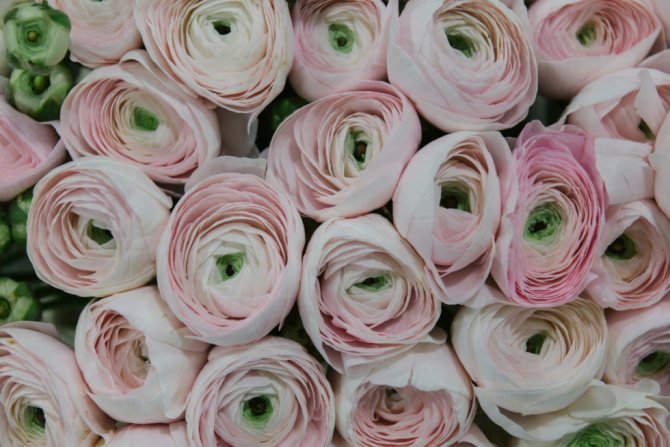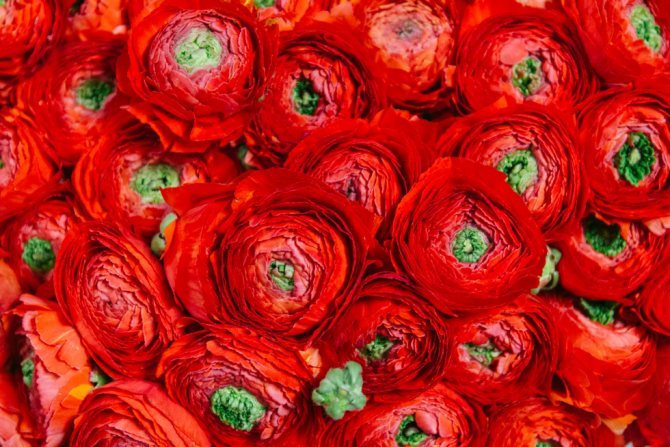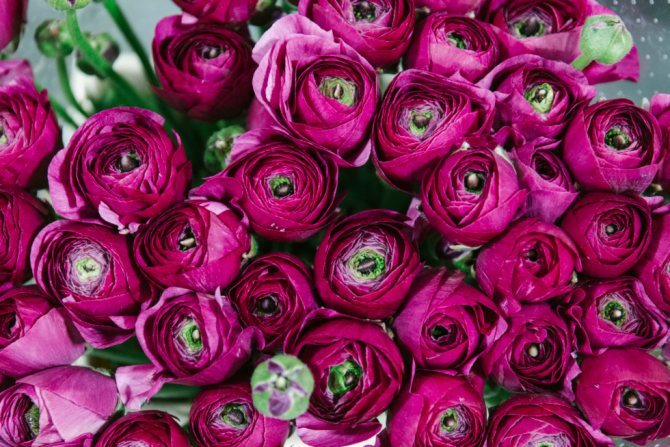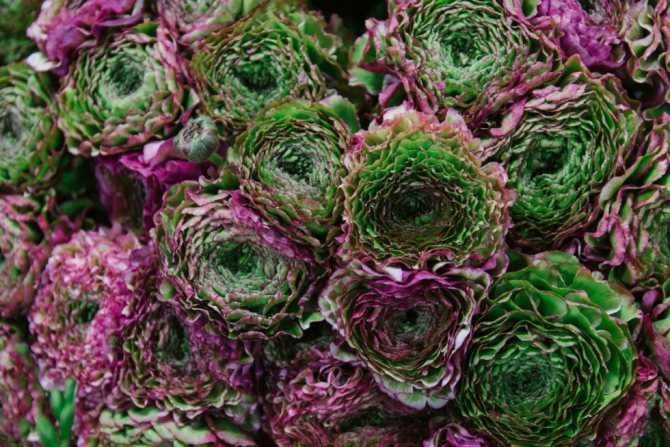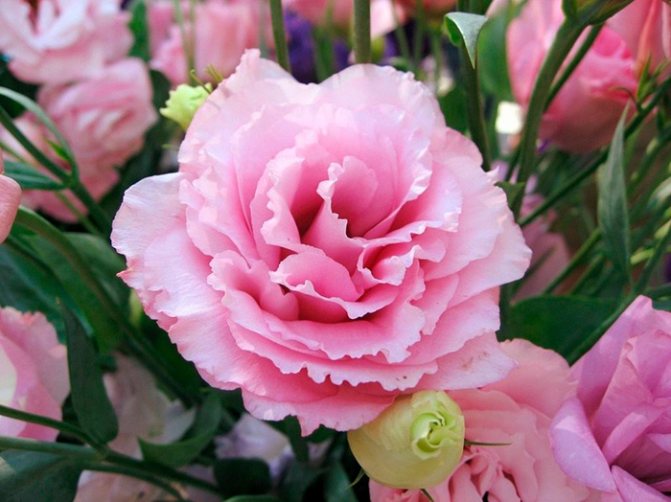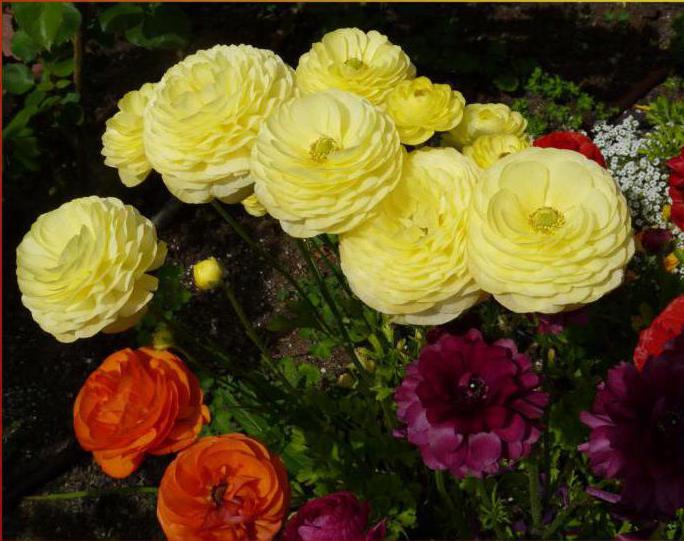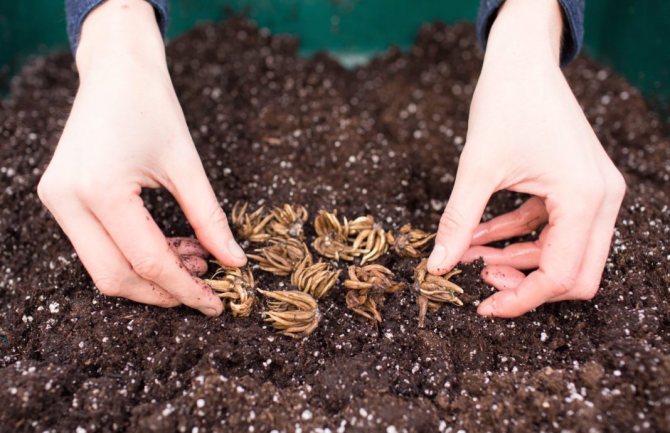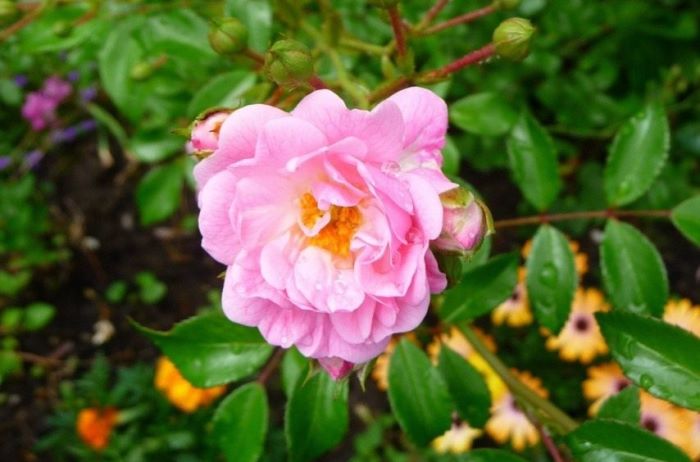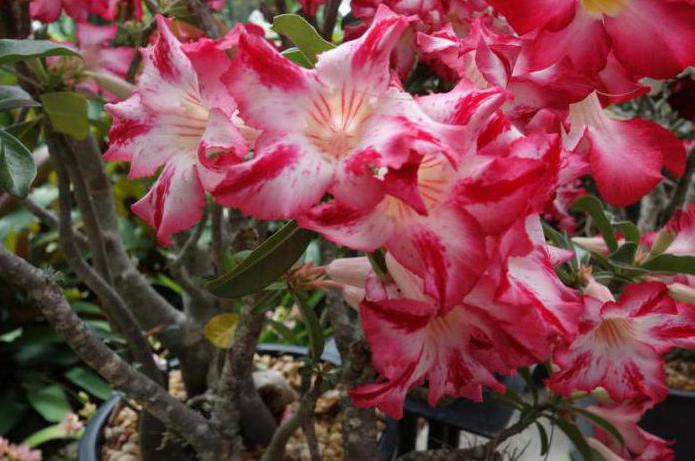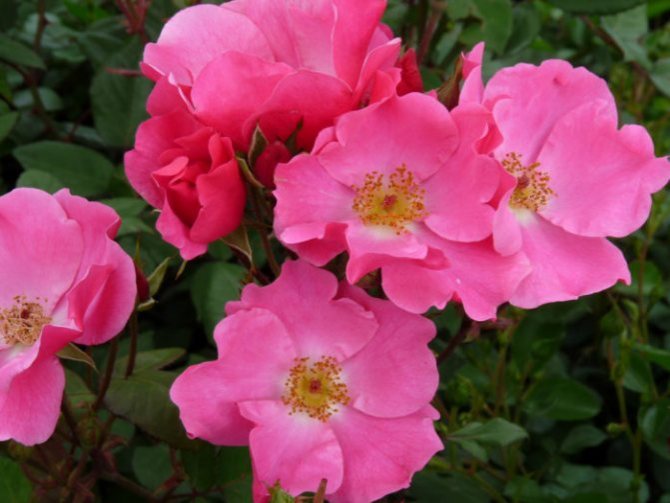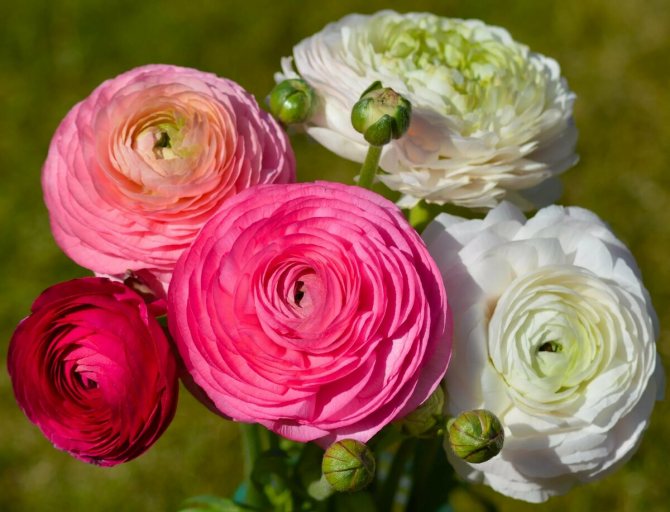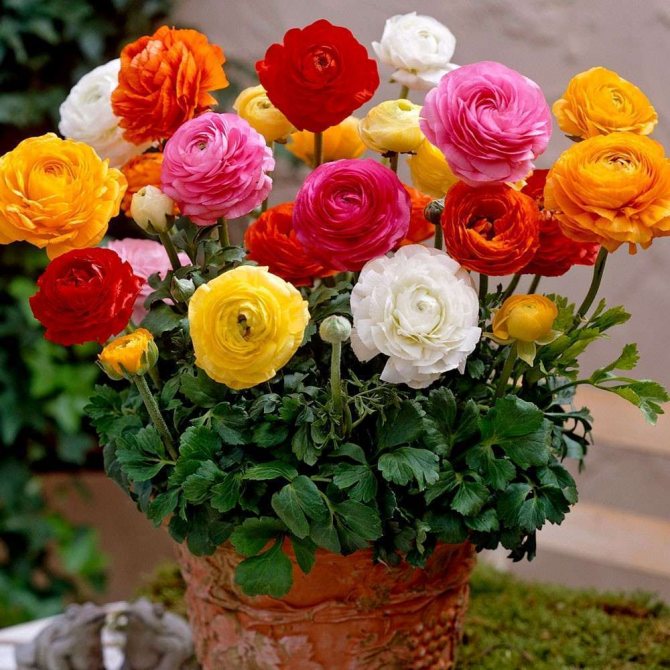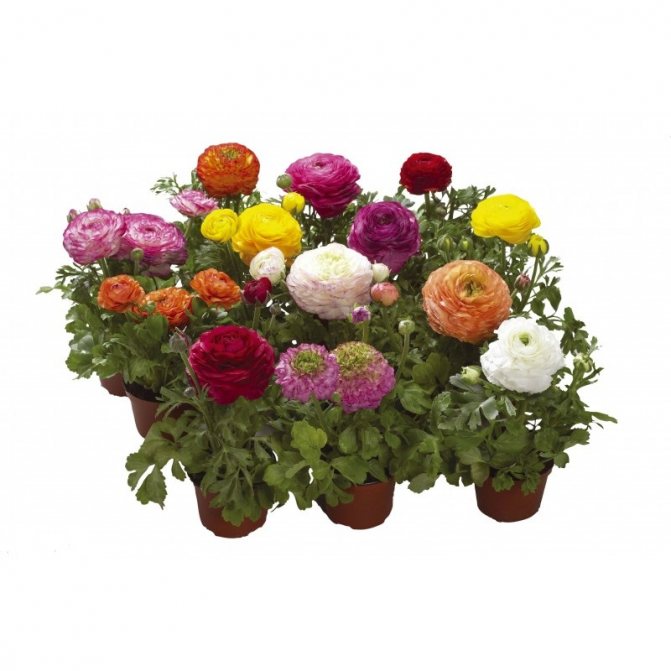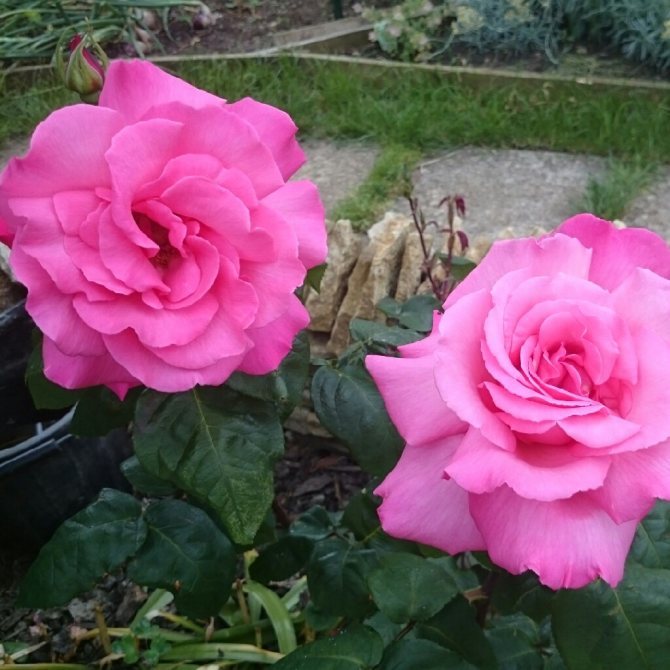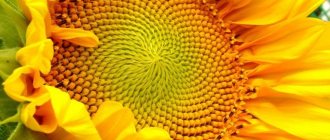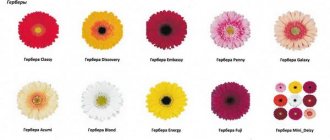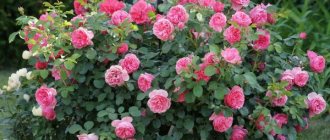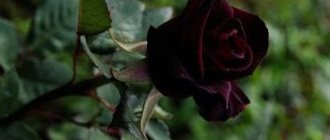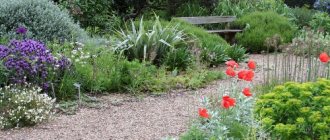The royal flower - rose - has no equal in beauty and aroma. However, gardeners are often wary of planting it on plots. Some are afraid that they will not provide proper care. Those with children or small animals avoid it due to the abundance of thorns. Most prefer to enjoy the grace of store-bought rosebuds. But even ardent fans of the flower sometimes want variety. We have prepared an article in which we will tell you how flowers that look like roses are called.
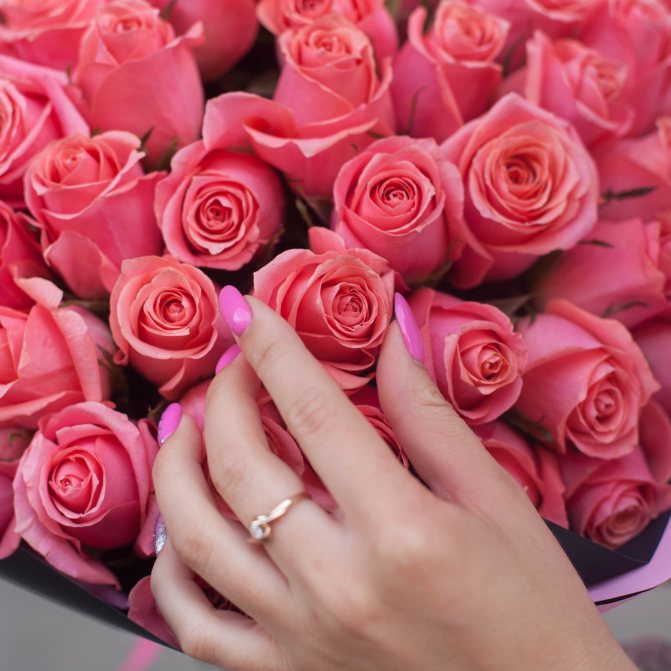
We have divided them into 2 groups. But they are not mutually exclusive. Plants that are used for bouquets in salons are grown both in the garden and at home.
Eustoma
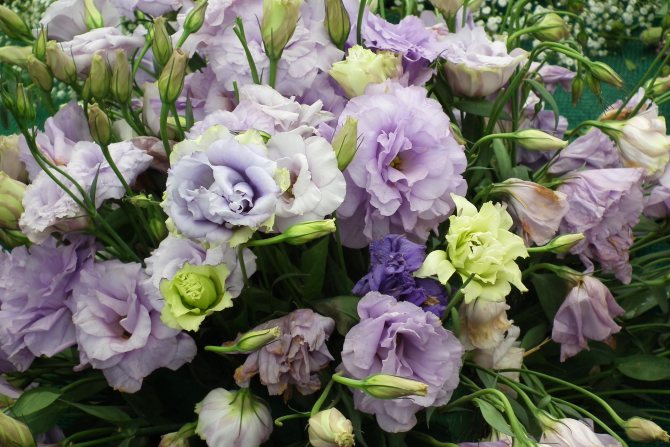

Eustoma is native to the southern United States. Both low-growing varieties, hybrids and tall ones are distinguished, which grow up to 1 m. The flower is distinguished by a large number of colors and terry - at least 30 cultivated varieties.
Shades can be very different. Ranging from the classic whites, reds and pinks to blue, orange and blue. The leaves are elliptical with a jagged edge.
Growing features:
- The growing season lasts up to six months. To get blooming in July, seeds must be planted in December.
- To obtain a bushy plant, you need to use the pinching method. As a result, there can be up to 20 inflorescences on one crown.
- The flower should be planted in sunny areas.
- Top dressing should be carried out one month after planting. For this, mineral fertilizers are used.
Eustomas go well with many flowers. For example, with freesia, alstroemeria, calla lilies and chrysanthemums. It is a versatile flower that can replace a rose.
Gardenia
An amazing resemblance to roses is noted by everyone who has ever seen a gardenia. The delicate aroma of jasmine and the graceful splendor of the plant conquer at first sight. A majestic flower looks like a rose and requires care and attention, affection and patience. Jasmine gardenia has several subspecies ranging in size from dwarf to tall. It has dazzling white large flowers, which acquire a creamy shade a little later, and dark green shiny leathery leaves, located in pairs opposite each other. In the wild, the plant is found in the highlands of Japan and China.
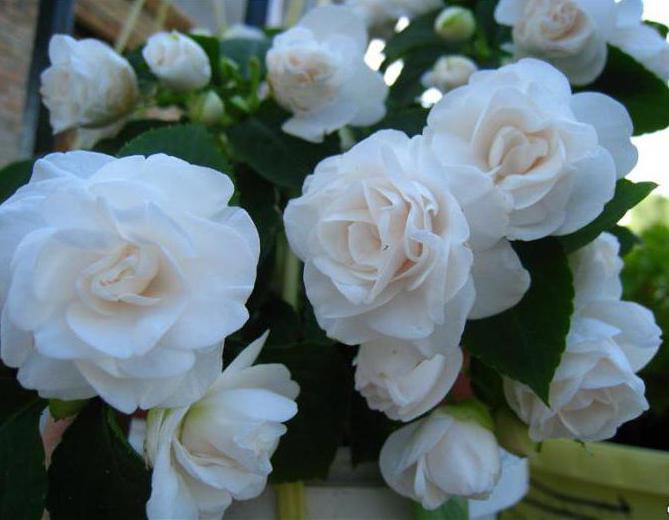

You can enjoy the flowering of a divinely beautiful plant from mid-summer to October. Most often, bushes are grown in flowerpots, not exceeding half a meter in height, which ideally complement any interior, placing floral accents in the room, decorating any space.
It is necessary to avoid bright sunlight hitting the bush; in case of insufficient lighting, you will need to turn on a fluorescent lamp. The most favorable location of the flower is on the southwestern windows. He needs regular moderate watering, and once a month this is done with water with a small concentration of citric acid so that the level of acidity of the soil does not exceed 5. When gardenia blooms, spraying is contraindicated.
Ranunculus
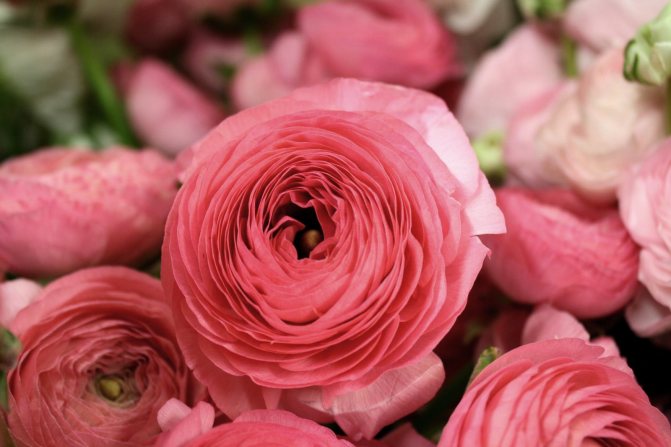

Another name for ranunculus is the Asiatic buttercup. This is a delicate and airy flower. Outwardly, it resembles a rose and a peony. This is a great option for flower beds and borders. When planted correctly, the plant will bloom throughout the season.Low-growing varieties can be grown in pots at home, tall ones are used to create bouquets and compositions.
The flower should be planted in a sunny area, protected from wind and drafts. The soil should be loose, slightly acidic and nutritious. Buttercups need regular watering and removal of faded buds.
Conditions for planting and caring for eustoma
It is better to grow this plant by sowing seeds. Choose a light and neutral acid soil. With increased acidity, seedlings will grow very slowly. It is better to take peat soil with the addition of sand. Peat tablets are a good alternative.
In order for the seedlings to germinate together, cover the container with seeds with a film, since they love heat (temperature at least 25 degrees) and moisture. As soon as the seeds germinate, remove the film and add backlighting, especially in winter, otherwise the sprouts will weaken and stretch out.
Water after the top layer has dried, avoiding moisture stagnation. To protect the grown seedlings from diseases, they are fed with fertilizers (zircon, foundationol). After about a month and a half, the grown seedlings dive and again cover with foil for a couple of days. At the same time, it is not recommended to abruptly remove it - the plant must be gradually hardened, opening the container, and only then open it completely. Transplantation to a permanent place in a pot is carried out after the formation of at least 4 leaves in the sprouts.
Hellebore
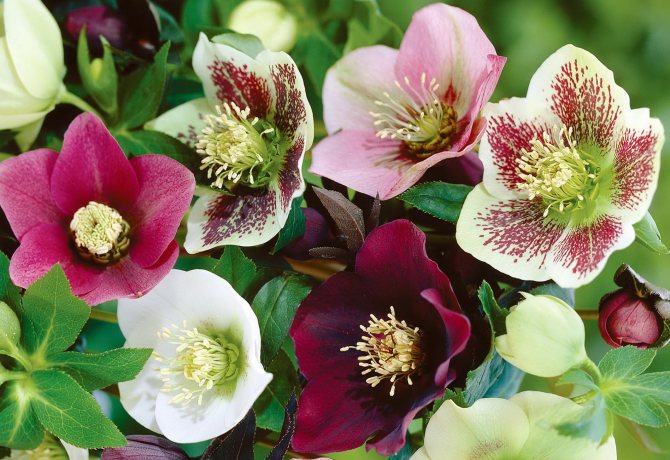

The hellebore is a perennial frost-resistant flower. It is called the Christmas rose. The flowering period is in winter or early spring. The leaves are bright green in color. They do not lose their decorative properties throughout the year.
The diameter of the flower can reach about 13 cm. Color: yellow, cream, white and various shades of pink. The hellebore genus includes about 20 species.
Such flowers are recommended to be planted next to shrubs, fences and walls of the house. They do not need frequent transplants, as the growth process is very slow.
Hellebores go well with daffodils, primrose, hyacinth and crocuses. In cold regions, the flower is grown as an indoor flower.
What are the names of flowers that look like roses?
First of all, they try to associate any beautiful flower with a rose. Several plants can approach the queen in their beauty and charm. New species of geranium and terry balsam, some varieties of primrose and gardenia, Chinese rose and Kalanchoe, terry adenium, peony and ranunculus, as well as certain varieties of tulips have a strong resemblance to the queen. The list is rather big. Attracting and charming gardeners, all of these flowers are distinguished primarily by the fact that they do not have such protection as thorns.
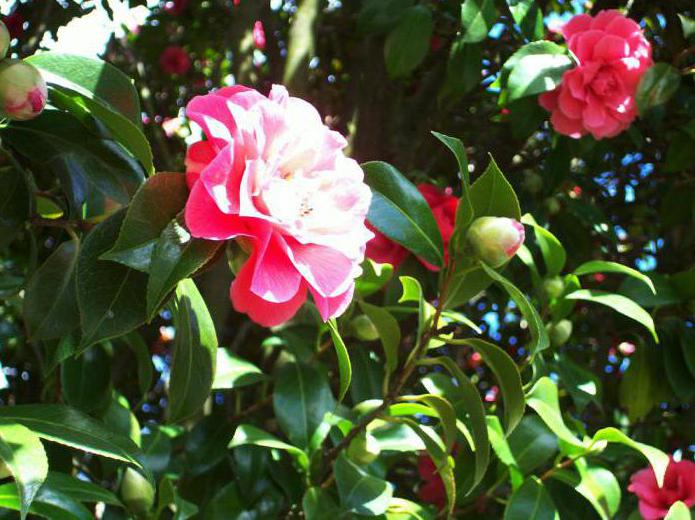

Hibiscus
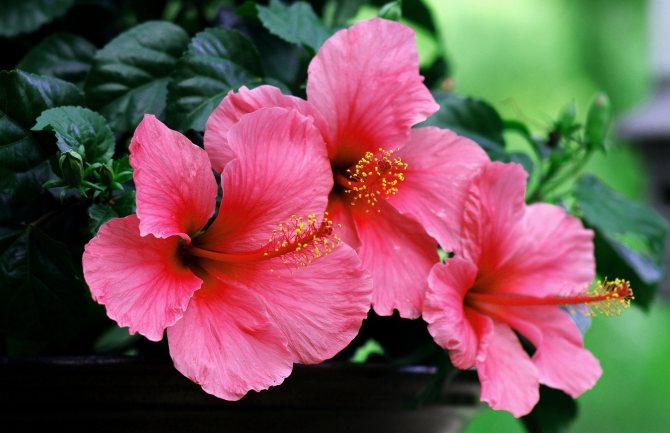

Hibiscus is a plant native to Southeast Asia and America. It has leathery elliptical bright green leaves. The flowers are single and large. There are varieties with wavy, double, simple and split buds. The color can be varied: yellow, white, pink, scarlet and red
The flowering period of hibiscus begins in May and lasts until the end of August. Most of the buds open and wither by the evening. Common types:
- Chinese rose. It is a shrub variety with double and cupped flowers. Diameter - 12-15 cm.
- Syrian. The compact shrub has erect leaves. The buds are funnel-shaped in white, pink or cream-colored.
- Sudanese kind. This shrub has dark red buds that reach 20-25 cm in diameter.
The plant is recommended to be planted in areas with diffused light and nutritious soil. Heat-loving varieties can grow in pots from the soil. They should be taken out into the garden or balcony.
Terry balsam
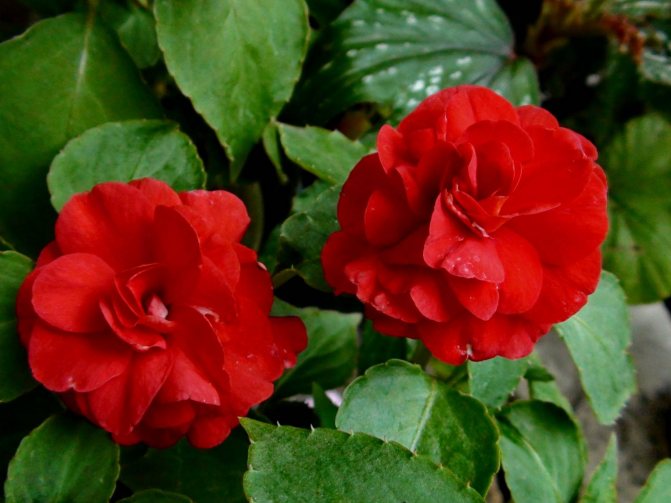

These small flowers, similar to bush roses, with rather loose petals, resemble the original no less than the rest of the brethren.The petals can be either classic pink, white and red colors, or they can be combined in two shades. Interestingly, the usual variety has green leaves, but more modern crossed crops may even have burgundy petals, it looks very interesting.
Balsam is more suitable for garden cultivation, this will require loose soil and a lot of water, because if the climate is too dry, the plant will be uncomfortable. It may not die, but you should not wait for beautiful leaves and buds, they will simply disappear. The only precaution when working with this flower is that you must not press or pull too hard, you also need to wipe it with minimal effort, because both the petals and the buds are very fragile.
Begonia
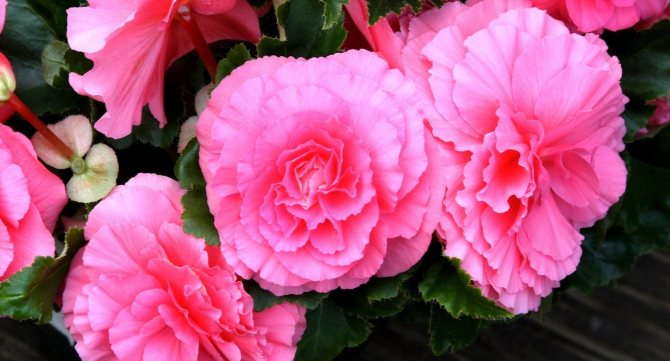

Begonia is considered one of the most popular flowers. The number of different varieties and hybrids of this plant exceeds several thousand.
The flower is distinguished by a variety of forms:
- shrubs;
- shrubs;
- herbaceous plants;
- ampelous;
- upright;
- creeping.
The common variety of all species is succulent and fleshy stems with asymmetric leaves. Depending on the type of terrestrial part, bush, tuberous and leaf begonias are distinguished.
Eustoma, begonia, ranunculus and hibiscus look like a rose. They can be cultivated as garden and houseplants. Subject to all the rules of agricultural technology, you can get abundant flowering for a long period of time.
Terry adenium
Perhaps the most popular copy of a rosette, perhaps a shrub. At home, it grows to about 35 centimeters in height; in its usual habitat, adenium can be a 10-meter bush. The buds during flowering are quite large, have a bright color and resemble a rose in appearance. The color mainly depends on the variety and even the place of planting. This culture has very good indicators on the part of practicality and unpretentiousness:
- consumes moisture cumulatively, that is, for one watering it is "reinsured" and leaves a small margin in case of drought;
- there is no need to wipe the inflorescences, on the contrary, this excess moisture is detrimental to the flower.
It should be noted that watering the plant in the period from June to September should be carried out with extreme caution, since a poisonous juice is formed in adenium at this time, which is dangerous for the skin. It is because of this fact that it is not recommended to buy seedlings for growing in a house where there are children or pets.
Impossible
Only for those who are confident in themselves: the Kawasaki rose.
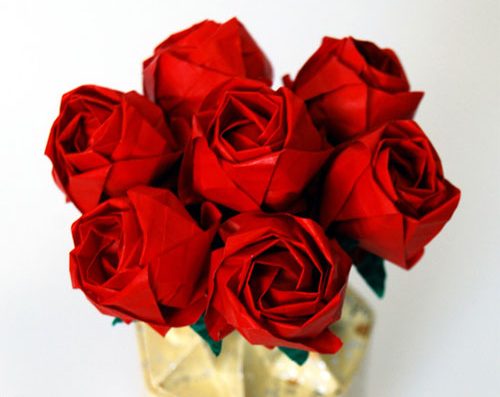

hand-made.by
Toshikazu Kawasaki is an origami theorist and mathematics teacher at Sasebo Technical College. To understand how to fold a Kawasaki rose out of paper, we recommend that you familiarize yourself with the detailed (and non-reproducible in one article) instructions, as well as with videos, which on average last from 10 to 40 minutes.
In short: a sheet of paper will need to be folded many times, unfolded many times, and then carefully folded along the fold lines. Sounds easy? Try it if you can.
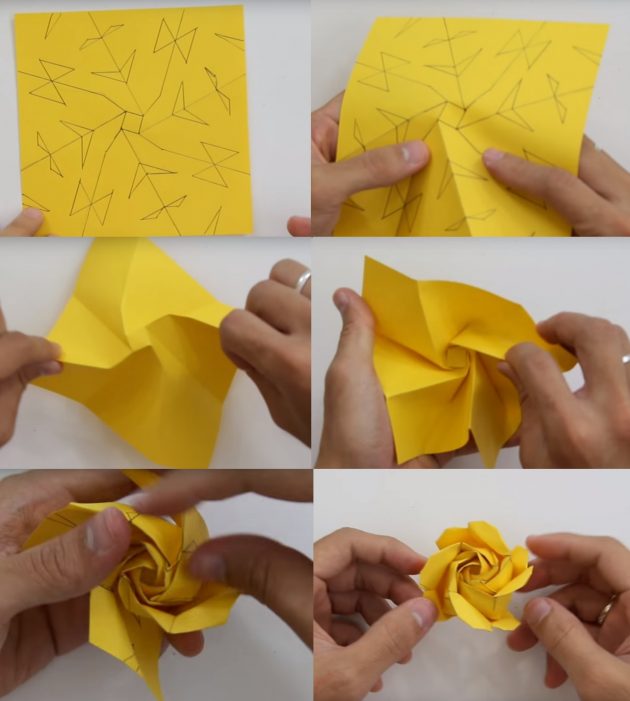

Making paper crafts is not only interesting, but also useful. Fine motor skills, patience and the ability to overcome difficulties are developed. Plus it is a way to relax and enjoy the process of creating beauty.
How many levels did you manage to overcome? Share your successes in the comments.
Fluffy beauty
Roses made from ribbons look very original. Such products can become an adornment not only of the premises, but also of your wardrobe.
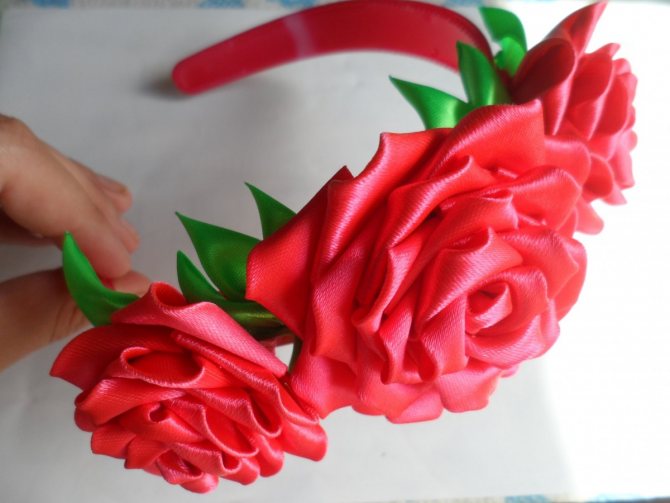

Craftswomen make such things from nylon, silk ribbons. You can cut the cambric into strips, and these will be fabric products. Organza roses look original.
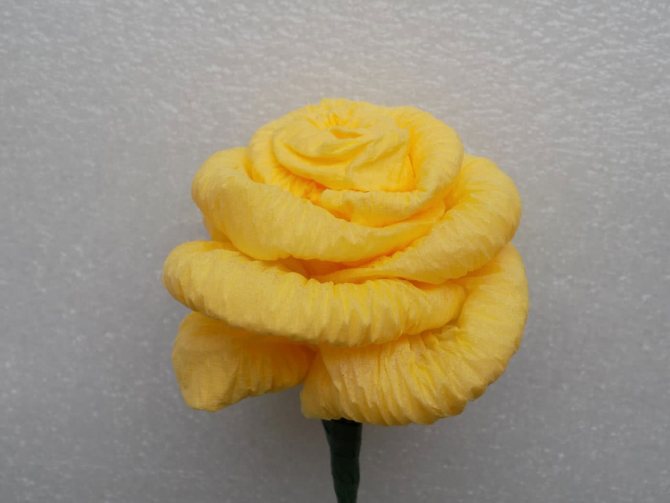

To make a voluminous rose, you need to cut the ribbon into many squares. The more constituent elements, the fluffier the flower will turn out. 30 squares is the most optimal amount.
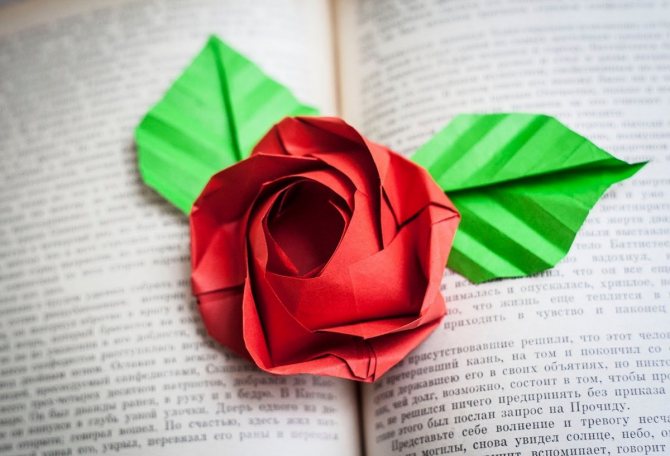

We turn the squares into circles and singe the edges with a lighter. Fabric petals should be stitched together, not glued.
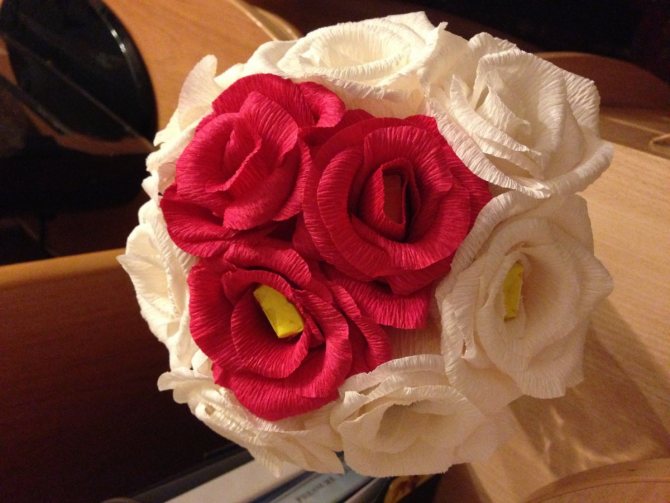

To collect the petals in a circle, first we make a bud from a square from a ribbon, collect it in a circle, fill it with filler and tighten. Next, we sew on the petals. First there are three elements, then five, and then all the other petals.
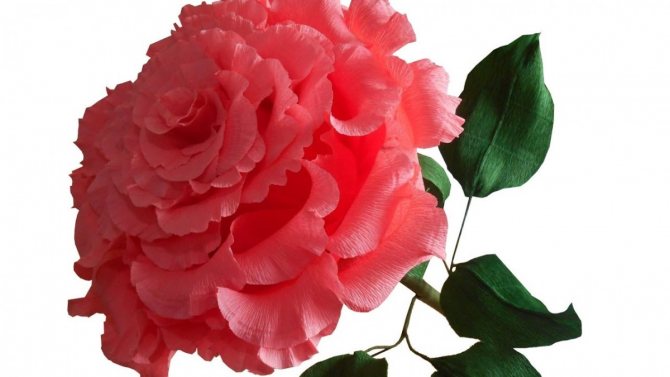

Interesting Facts
In China, the rose was considered an imperial flower, only the gardeners of the imperial garden had the right to grow it - everyone else was strictly prohibited. From China, she came to India: there she was revered as a sacred flower, and many legends were associated with her name. In Japan, this plant did not deserve such love as in other countries, but it was there that the multi-flowered rose grew, which became the basis for breeding new varieties.
Then it became part of the culture of the ancient Greeks - no important ritual events, be it a wedding or a funeral, could do without it. Along with this, the rose has been studied from a botanical point of view. So, it was Theophrastus, who is often called the father of botany, who described the species of this plant growing in Greece, told about its planting and caring for it.
The Romans adopted the respectful attitude to the rose from the Greeks: it was symbolized with morality and purity, and besides, they began to grow it here on an industrial scale. Moreover, in the spring in Rome, Rosalia was even held (a feast of remembrance of the dead, during which the graves were decorated with wreaths of roses).
But as the empire began to decline, the plant began to be associated with diametrically opposed concepts - vulgarity and immoderate luxury. After that, during the period of early Christianity, the rose was temporarily forgotten and regained its status only by the 4th century.
She did not get to Western Europe at once, and it is difficult to call this road an easy one. So, these flowers were brought to France only in the 5th-6th centuries, in Germany they began to be cultivated only in the 13th century, and in England they appeared even later - the Benedictine monks who came from France in the 15th-16th centuries contributed to the spread.
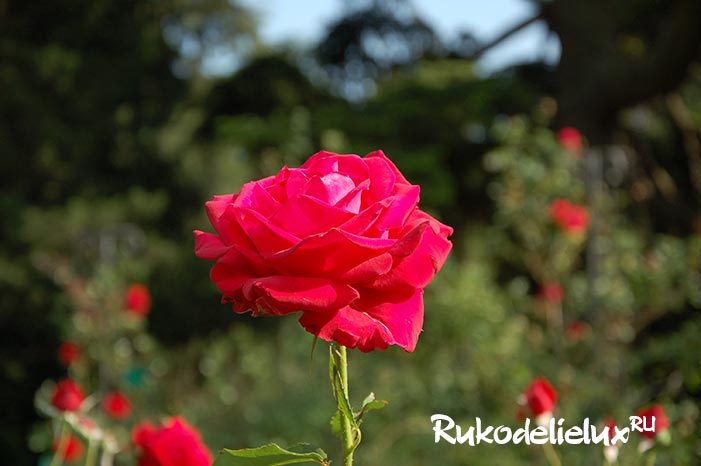

Rose in myths and legends of different peoples
This flower is inextricably linked with the concept of beauty and the divine principle in the myths of different peoples. So, in Indian mythology, from the blossoming bud of this flower, Lakshmi appeared - the most beautiful girl in the world. She was so beautiful that, seeing her, the god Vishnu fell in love, woke her up with a kiss and made her his wife.
According to another legend, the god Vishnu once argued with Brahma about which flower is the most beautiful in the world. Vishnu, already conquered by her grace, insisted that it was she who was worthy of the title of the most beautiful; Brahma, who had never seen this flower, preferred the lotus. But as soon as Vishnu showed Brahma the rose, he agreed with him, and the dispute was settled.
In Greek mythology, the flower is associated with Aphrodite, the goddess of love. It was believed that it was formed from the sea foam left on the body of the goddess when she came out of the sea. Once Adonis, the beloved of Aphrodite, was mortally wounded by a boar while hunting. Upon learning of this, the goddess rushed to Adonis in tears, not paying attention to the thorns of roses that had dug into her feet, growing in her path. It was the spilled blood of Aphrodite that painted the once white flowers in a scarlet color.
However, this is far from the only story about how the rose acquired a red hue. The Persian version is much sadder. This legend tells how the nightingale admired the rose. He fell in love with her with all his heart and decided to hug her to his chest, but ran into sharp thorns. The blood of the unfortunate man turned the petals red.
According to another version, Eve, walking in the Garden of Eden, saw a beautiful snow-white flower; She liked him so much that she could not resist and kissed him.The white rose, flattered, we listen to this, blushed with embarrassment - and so it remained red.
How to make a boat out of paper, see here.
Most interesting articles
- How to make a dream catcher
- How to make a diaper cake with your own hands
- Do-it-yourself deer - 5 ways to do it
- Crafts from cones with your own hands
- How to make a paper plane - 5 options
- Modular origami - how to do it step by step
- How to make DIY photo frames
- How to make chestnuts crafts
- How to make DIY postcards
- How to make a slime
- How to make autumn crafts
- How to make origami flowers

